New Finnish champion in forestry skills
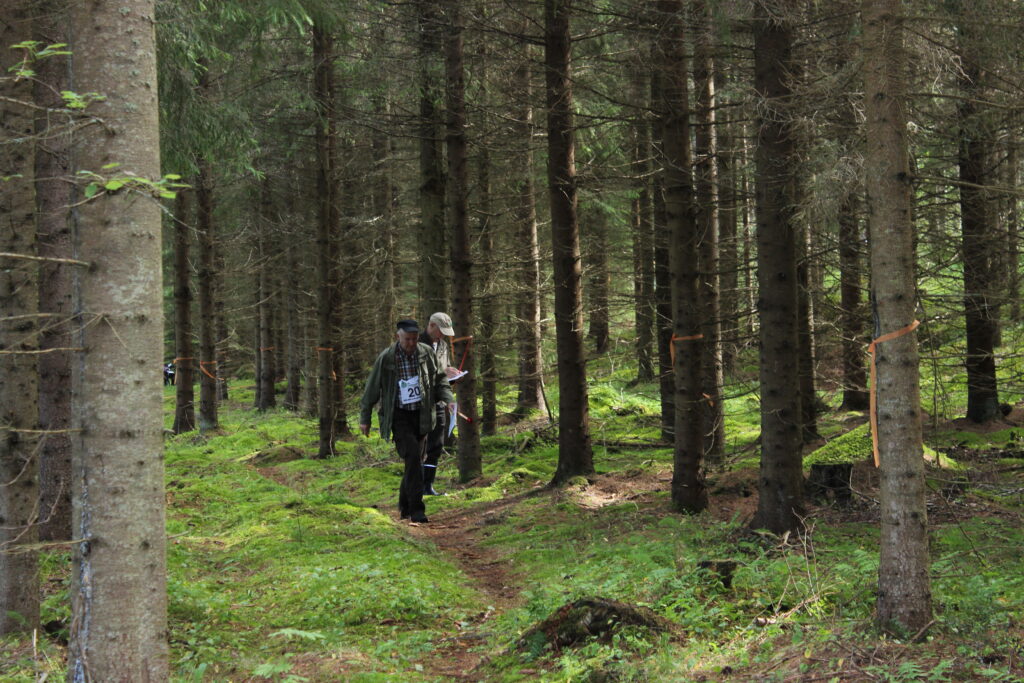
What do you call it when a couple dozen silent people gaze at a lot of trees along a stick, occasionally turning it up at an arm’s length and focusing their eyes at its top end? The Finnish Championships in forestry skills, of course.
This is the most important task in the competition, and the only one where outsiders are permitted to observe. The instructions are strict: you may not speak to the competitors or disturb them in any way.
The task is the first one to be completed, and also the most crucial one: ”It’s this one that most probably determines the winner,” says Mr. Pertti Mäkinen, Director of the Competition, after his retirement a couple of years ago employed by the Forestry Management Association of Päijät-Häme, the local association of forest owners.
In this mind-boggling forest compartment the competitors must assess the volume of growing stock per hectare. The only tool permitted is a relascope, busily plied by every one.
What the mind boggles at with this compartment is that the three principal tree species in Finland, pine, spruce and birch, all grow here in logwood size. To be able to assess the volume of timber, you should first determine the average height of the trees as well as the dominant species, and that is very difficult here.
This is why the maximum score for this task is 20 points, which is more than ten percent of the maximum total of 195 points – a score that no one has ever reached.
At the starting point, the organisers reckon that the winner will net ”around 172 points,” and compared to this, 20 is a lot. As can be seen from the results, their guess is not all that bad.
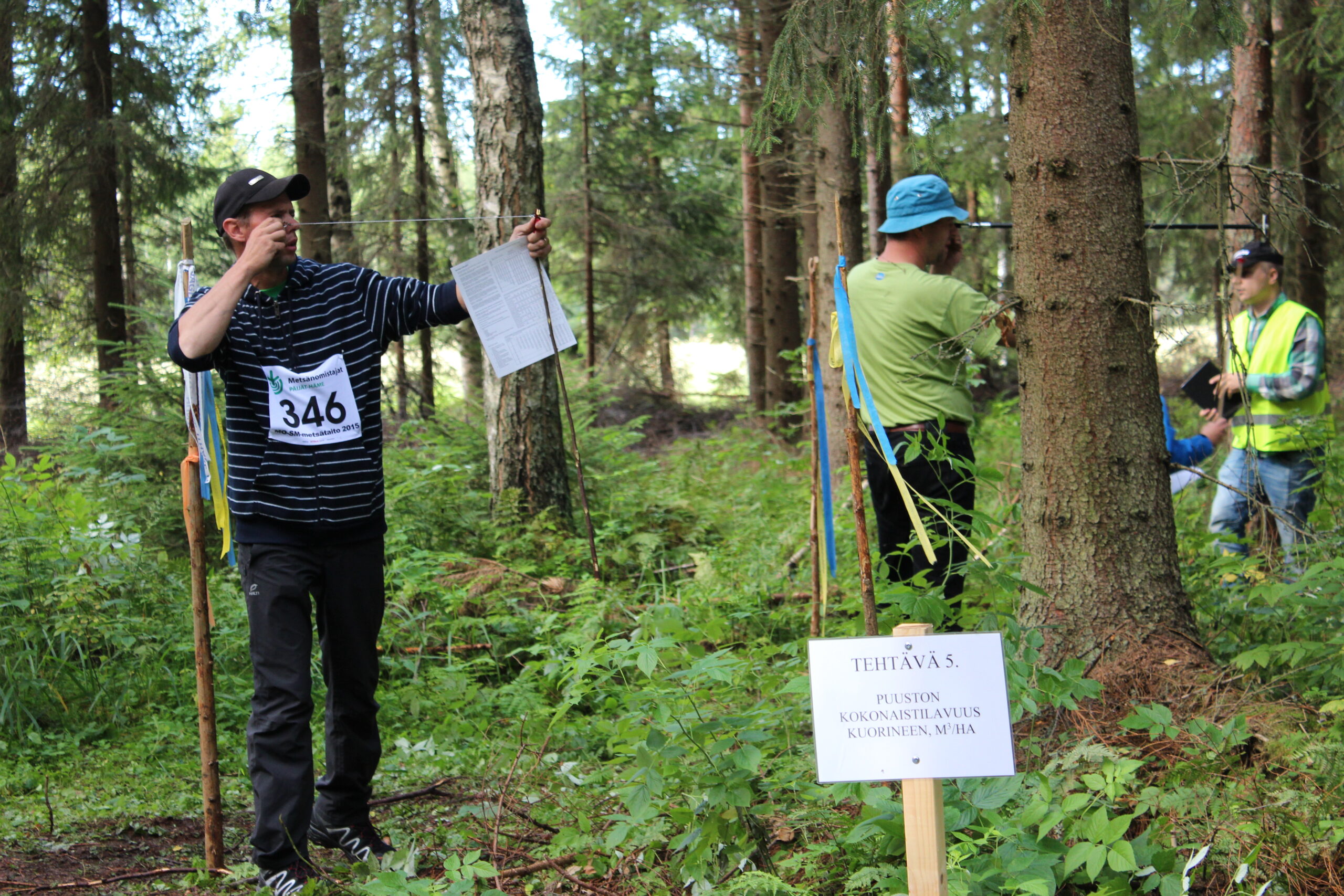
Hard work looking for competition site
Traditionally, this competition was organised by the regional Forest Centres, but after the reorganisation of the Finnish forest administration in recent years they decided to drop the competition. Last year it was not organized at all.
Early this year, the Päijät-Häme Association started talking about whether the local forest owners’ associations should not assume responsibility for organising the competition. After all, the participants are forest owners – forest professionals, for example, may not enter.
”It was Pertti’s idea originally. Then we took it to our Board and were given the go-ahead,” says Mr. Jari Yli-Talonen, Executive Director of the Association.
The most difficult bit was finding a good location for the competition. The problem was to find suitable spots for all the tasks within a short distance from each other, and also to get permissions from the landowners.
”There were those, too, who said no. Still, everything clicked here,” said Mäkinen. ”Here” means the Kalho village in the Hartola municipality.
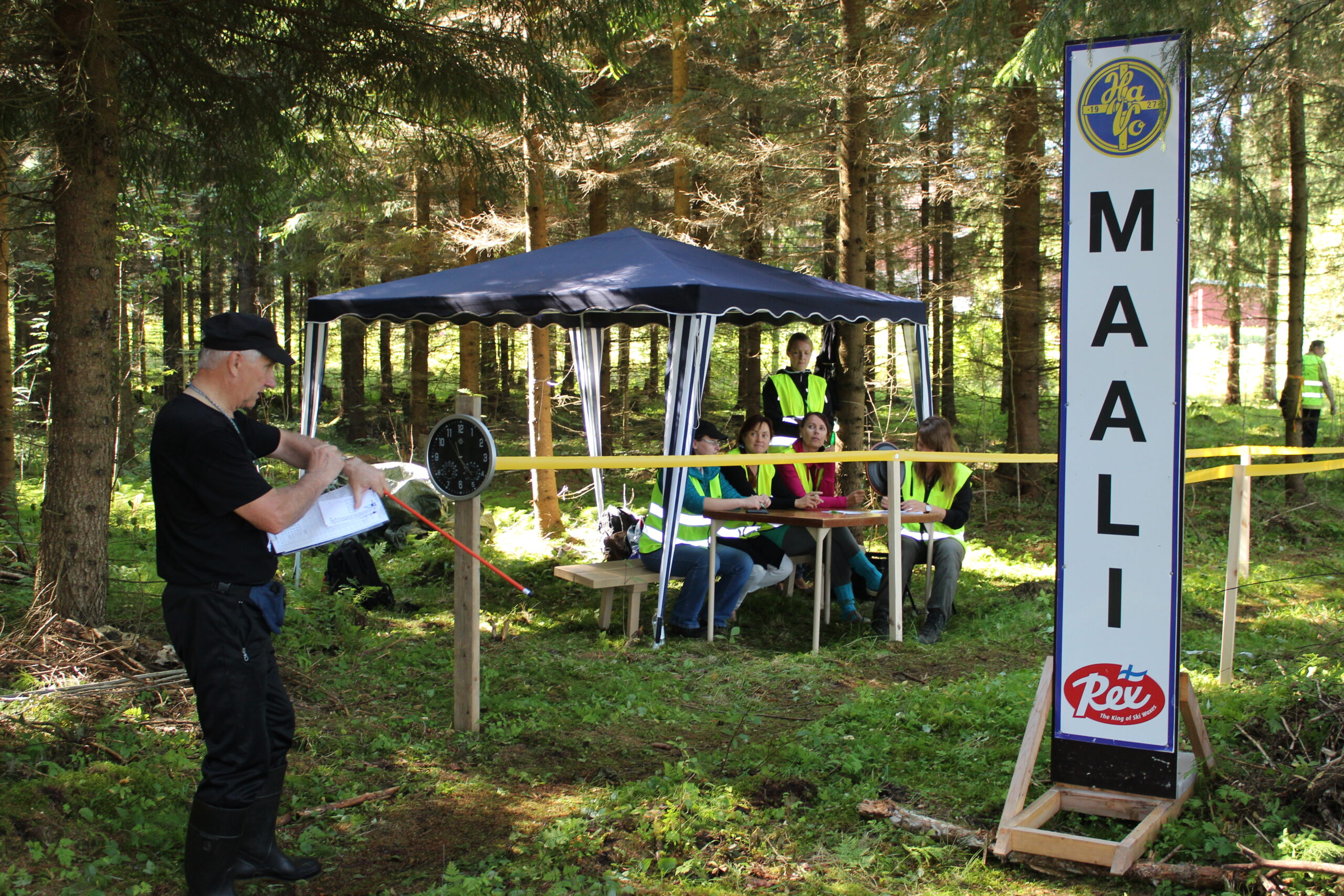
Tasks are diverse in character
There are many different tasks in the competition. In addition to assessing the volume of growing stock, the competitors had to determine forest type, maintenance needs of young stands, need for forest management operations, basal area and number of stems per hectare, height and volume of a single tree, age and annual increment of forest, medium diameter of trees at breast height, size of area and the name of the valuable habitat in question – among other things.
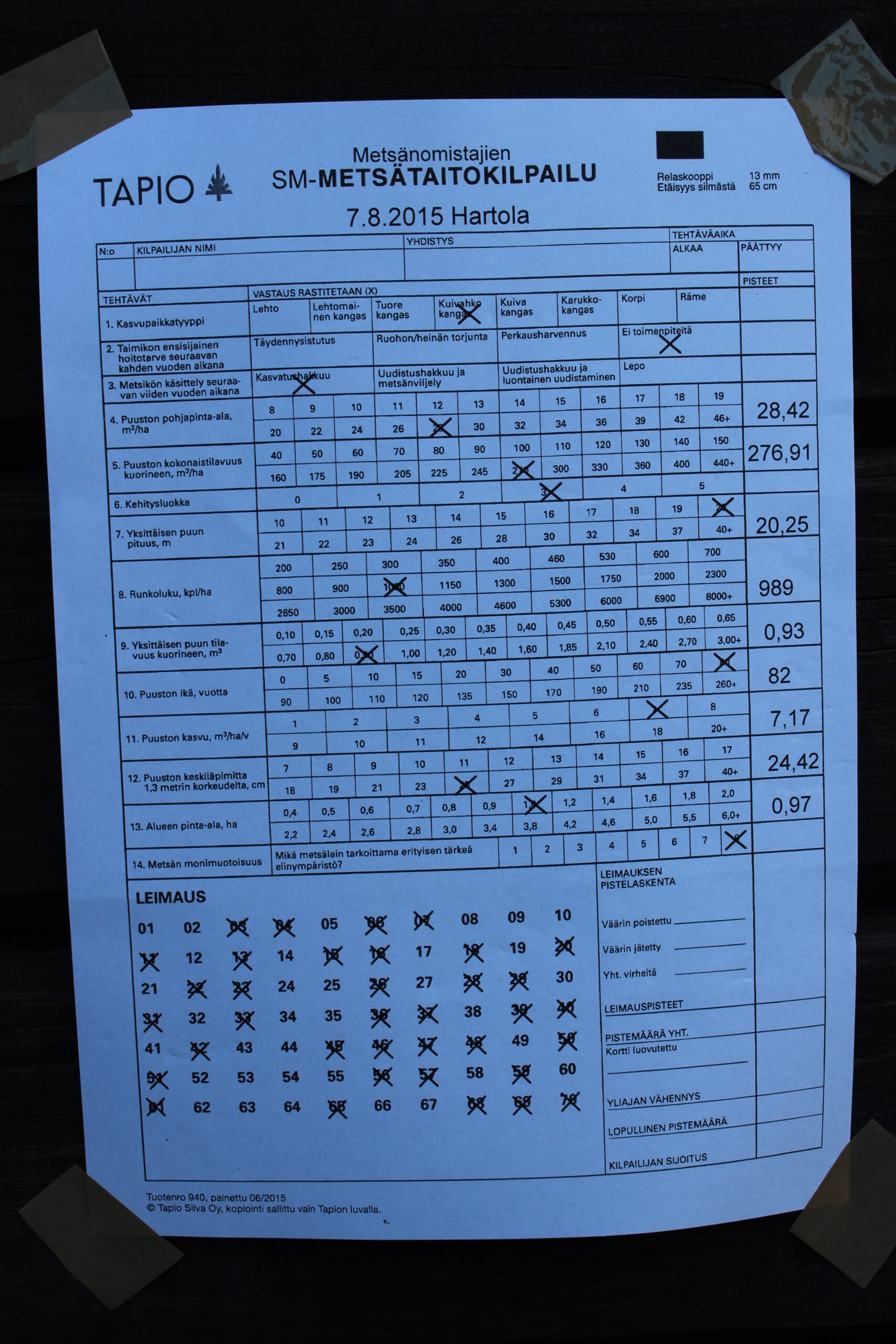
One task was to choose the trees to be harvested next from a forest compartment.
The competition included three classes: Men’s, Women’s and Under-18’s. The length of the track was 2.5 kilometres and it had to be completed in one hour and 41 minutes – only those over 60 years of age were allowed 20 minutes longer. Three points were docked off for each additional minute.
The competitors could participate either as individuals or as teams. Each team consisted of four members, one of them a woman, and the team score was based on the scores of the three best members.
Forest owners showed keen interest
The mood at the start is relaxed, though we’ve only reached the pre-start so far. Here, the competitors are checked; they may only carry a relascope, a scorecard to record the answers by ticking the correct boxes, a pencil with eraser and frequently-used statistical tables – some of which are also printed on the scorecard.
Technical measurements are forbidden. As an example, using the scorecard as a measurement tool is forbidden.
The purpose behind the pre-start phase is to decrease the number of people at the actual start. From the pre-start, each competitor is permitted to move to the actual start at a distance of 200 metres. They are then sent on in groups of four, and the time of departure is recorded carefully.
And there is quite a crowd of eager entrants. As the Board of the organising Association stipulated that the competition should not cause financial loss, the competitors paid a participation fee, amounting to 70 euros for members of forest owners’ associations and 100 euros for others.
”We calculated that with 300 participants we’d be in the clear, and with 400 we’d do very well. In fact, the highest participant number was 353,” said Yli-Talonen.
Next year’s championships are secure
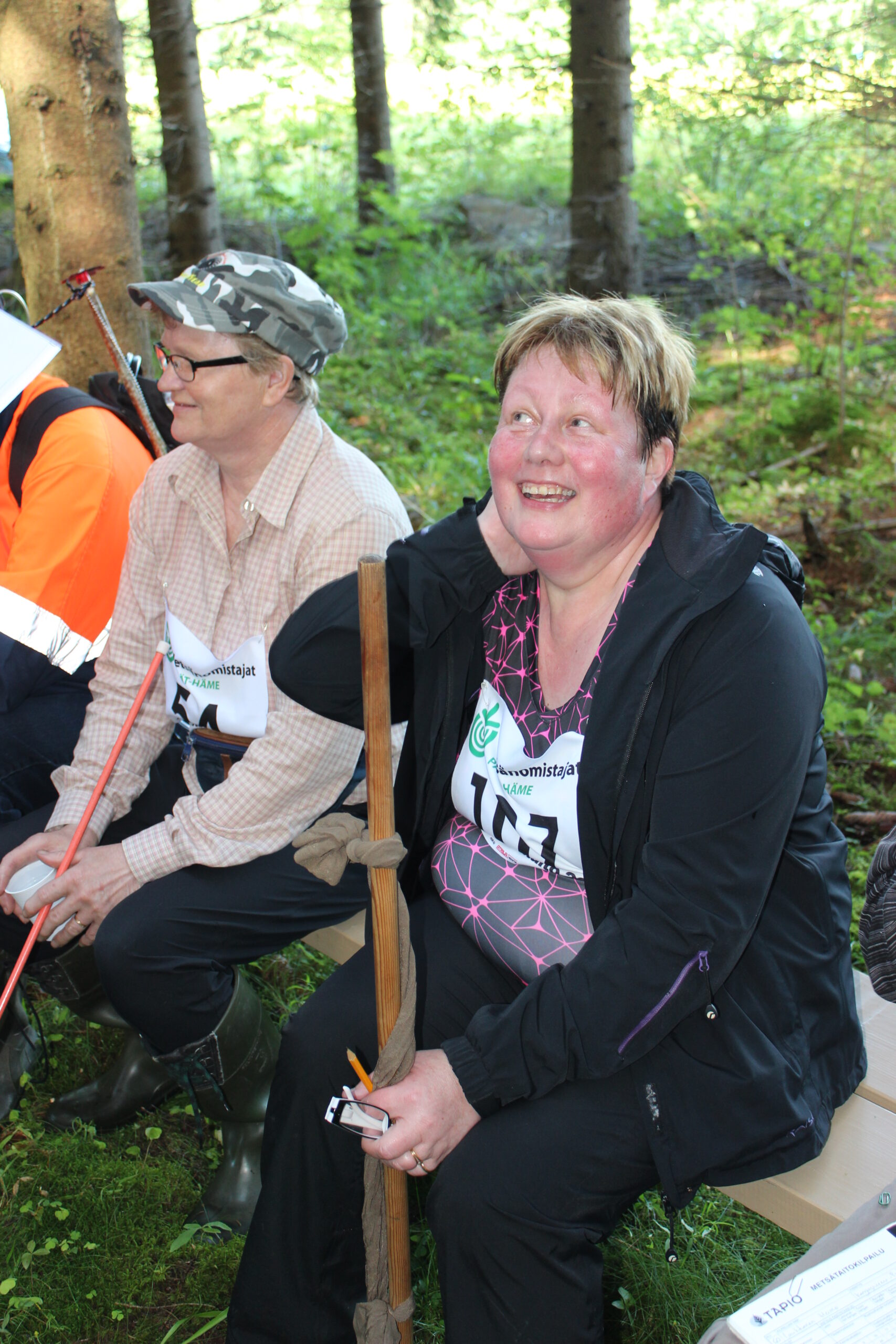
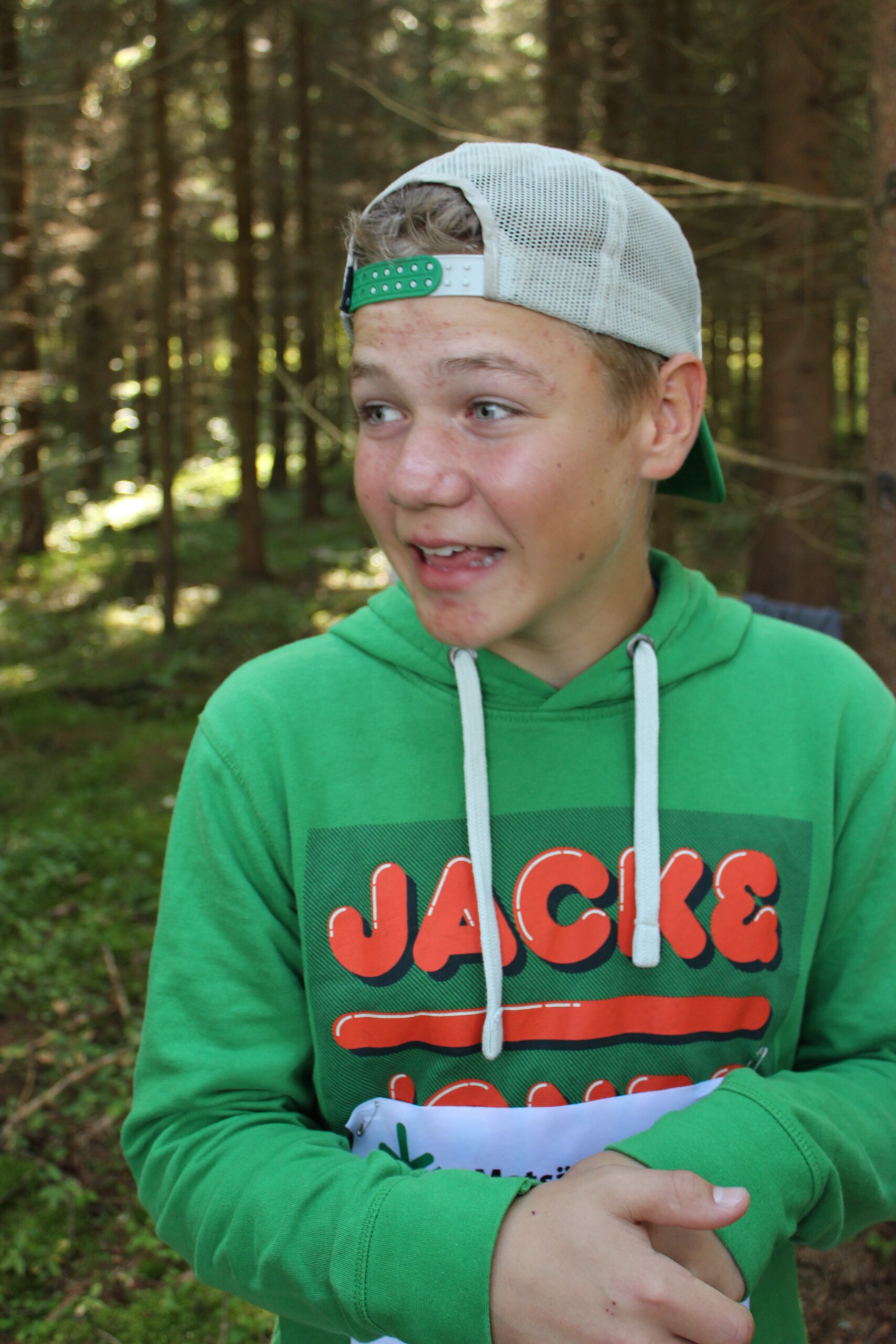
What about feelings at the finish, then? The first thing to notice is that the final spurts are not quite what you might be used to: instead of putting on more speed, the competitors actually slow down.
A clock placed at the finish line allows the competitors to check whether they have time left. If yes, they may still focus on their scorecard. So there are always a couple of forest owners squatting at the finish, reviewing their answers while chewing their pencils and gently perspiring – the day being one of the sunniest so far this summer.
Ms. Kirsti Nivala, resident of Merijärvi and a member of the Pyhäjokilaakso forest owners’ association, thinks the track was good and challenging. ”You really had to think hard, but luckily I was on my own. I’d have had more trouble if my husband had been with me,” Nivala thinks.
She agrees with some others who quip that the answers are most likely based fifty-fifty on skills or luck, ”only you never know which of them it is.”
For Nivala, the competition is the highlight of the year. ”I have participated since I was ten. If I remember right, this is the tenth competition for me,” says Nivala.
Mr. Topi Maanela from Mäntsälä is also quite a veteran, despite being only 16. ”This is the fifth competition for me,” Maanela says. The most difficult task for him was the selection of trees to be harvested.
The number of competitors in the Under-18’s was only about a dozen, despite the fact that they could participate free of charge. The Women’s class had some 40 participants.
Yli-Talonen assures me that in the years to come, the championships in forestry skills will be organised annually, with the forest owners assuming responsibility for the arrangements.
This comes as no surprise. Mr. Mikko Tiirola, Chairman of the Forest Board of the Central Union of Agricultural Producers and Forest Owners (MTK), speaking before the prizegiving ceremony, said that the competition participants constitute the nobility of Finnish forest owners. He went on to say that the competition disseminates and strengthens the positive message of forest ownership and forestry in general.
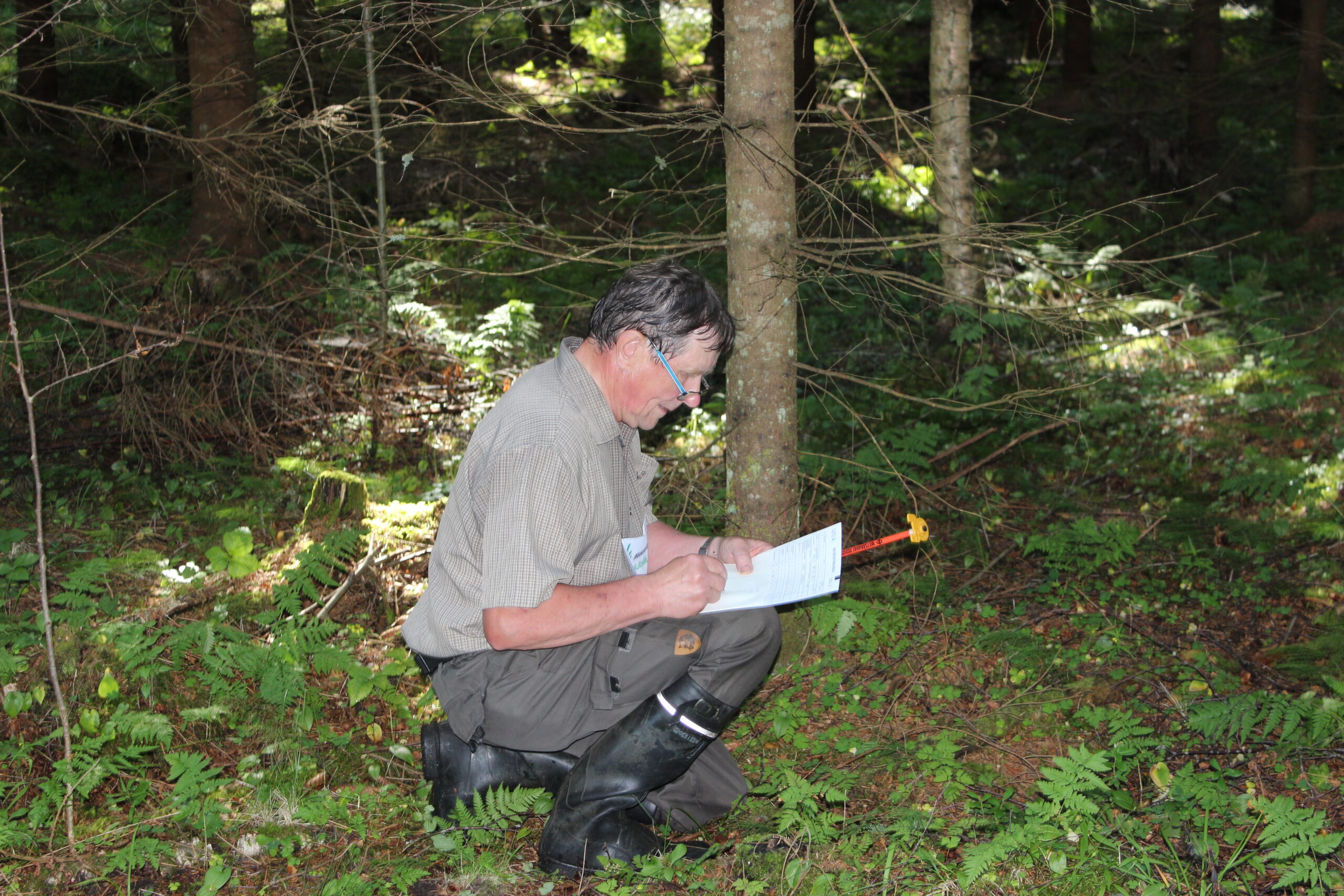
Location of Kalho village in Hartola
Finnish forest owners’ organisations

Kirjoita kommentti